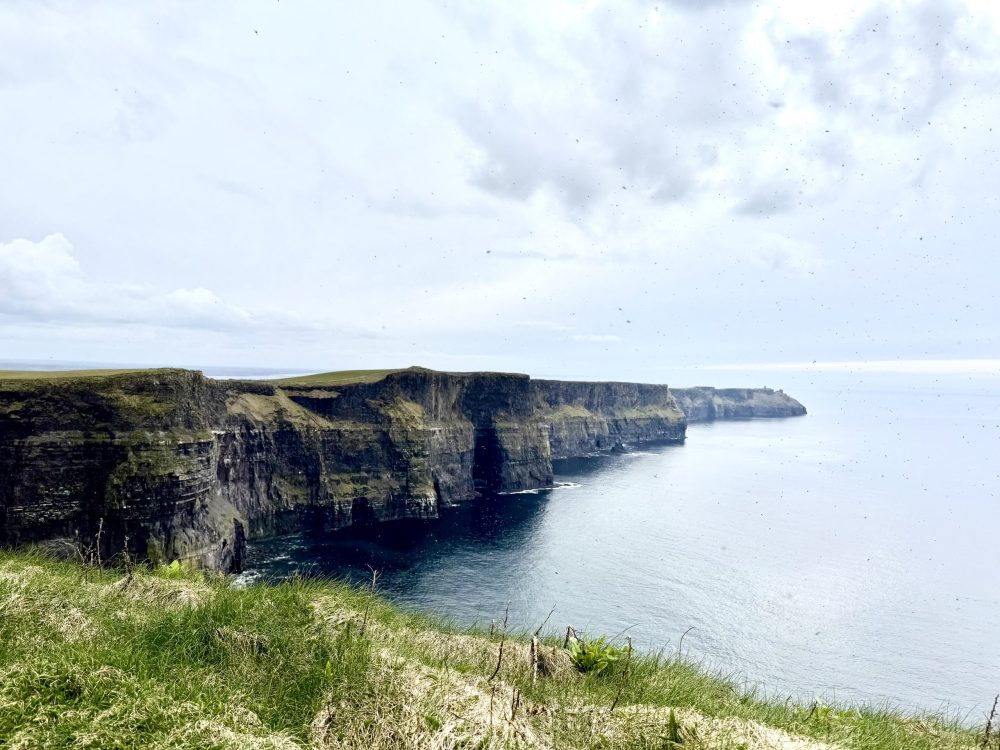
2025 International Day for Monuments and Sites: The Cliffs of Moher

Every country and continent recognizes the importance of commemorating physical places for their cultural, historical and/or natural significance. Today, we reminisce about these important landmarks as we celebrate International Day for Monuments and Sites. The United Nations Educational, Scientific and Cultural Organization (UNESCO) has highlighted these important sites through lists and designations, such as World Heritage Sites, Global Geoparks, and the World Network of Biosphere Reserves.
UNESCO Global Geoparks (UGGps) are designated areas that showcase sites and landscapes of international geological importance, managed through a comprehensive approach that emphasizes protection, education and sustainable development. What sets them apart is their bottom-up strategy, which actively involves local communities in preserving natural heritage while promoting sustainable economic growth. This model has gained global popularity, and as of now, there are 213 UNESCO Global Geoparks spread across 48 countries. One such notable UNESCO Global Geopark is the Cliffs of Moher, found within the Burren in County Clare, Ireland. The Cliffs of Moher were designated as a UNESCO Global Geopark in 2015 as an acknowledgement of their exceptional geological and natural values and commitment to sustainable development. Home to a wide variety of flora and fauna, including many unique plant species and a diverse birdlife, the site boasts a rich history and cultural heritage, with evidence of human settlement dating back over 6,000 years. This designation recognizes the hundreds of centuries of cultural and natural significance of this incredible landmark.

Recently, my husband and I had the privilege of visiting the Cliffs during a trip to Ireland. Experiencing the majesty of the Cliffs of Moher firsthand was a humbling reminder of nature’s raw beauty and power. Formed around 330 million years ago, the majestic Cliffs of Moher are towering limestone walls rich with fossils and wildflowers, where Atlantic waves crash against their base and a vibrant array of wildlife calls them home. Located on the west coast of Ireland along the famous “Wild Atlantic Way,” the Cliffs stretch for 8 kilometers (5 miles) and are an astounding 214 meters (702 feet) high. They are named after an ancient promontory fort called ‘Mothar,’ which was destroyed to build a signal tower at Hag’s Head during the Napoleonic Wars. In old Gaelic, ‘Mothar’ translates to ‘the ruin of a fort.’

While on our trip, we took a tour from Galway through the Burren out to the Cliffs. From the Cliffs, we took a ferry to the smallest of the beautiful Aran Islands, Inisheer, and spent the day on the island. Upon our return to the main island of Ireland, we took a tour of the Cliffs of Moher from the bottom before returning to land and going to the top of the cliffs to hike. The locals say that several million years ago, the Aran Islands were attached to the Cliffs, then the Ice Age caused the land to split away and drift intothe Atlantic.

Visiting the Cliffs of Moher inspires a profound appreciation for the power and beauty of geographical landmarks and their lasting influence on history and culture. Standing atop the towering cliffs, carved by time and the relentless Atlantic waves, I gained a sense of how nature has shaped not only the land, but the people who have lived alongside it for centuries. The dramatic landscape tells stories of ancient forts, maritime watchtowers and Celtic legends, revealing how geography has influenced settlement, defense and even folklore. It became clear that these Cliffs are more than just a natural wonder—they’re a testament to the deep connection between place, heritage and identity.
As we commemorate the International Day for Sites and Monuments, I invite you to think about important places in your life that have signified meaningful events. Whether they are formally recognized sites, such as the Statue of Liberty, or personally significant places, like your childhood home, these places provide a unifying thread between memory, identity and history. They serve as tangible reminders of who we are, where we’ve come from and the moments that have shaped our journeys. In honoring these spaces—both grand and intimate—we acknowledge their role in preserving stories, fostering connection and inspiring future generations.
Keep Up With The Accords
More to read
The AMUN Accords is a premier resource for fact-based Model United Nations simulations. We are always looking for new contributors. Want to write for the AMUN Accords? Check out out the submission guidelines and then get in touch!




